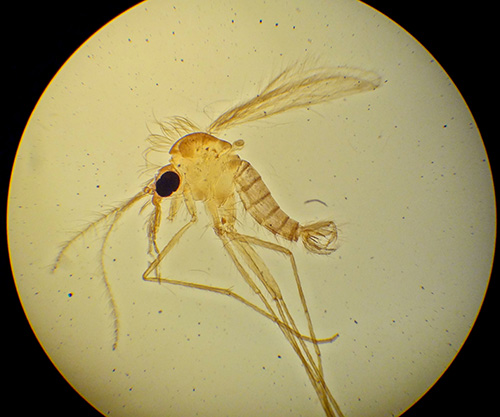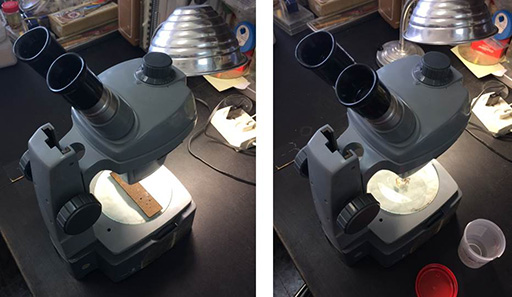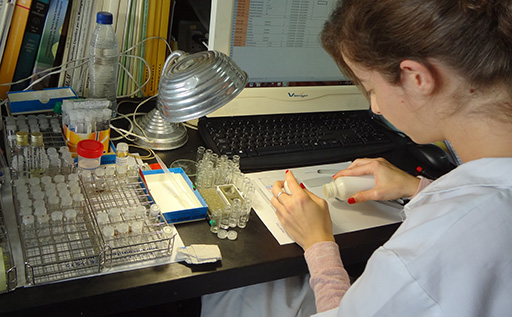IDENTIFICATION OF DISEASE TRANSMITTERS ARTHROPODS
|
Description |

Phlebotomus perniciosus male
The group of research ”Arthropods’ Biology and Biodiversity (BBA)” of the Faculty of Biology-UCM works since 2008 in the monitoring of phlebotom populations in the Community of Madrid, within the network “Surveillance and vectorial intervention of the outbreak of leishmaniasis in the Southwest of Madrid”, as well as in the Animal Protection Centers. Since 2016 we work in the surveillance of Aedes albopictus, commonly known as tiger mosquito.
The team also provides technical advice and attention to queries and demands generated by the Public Health services. These works are carried out thanks to the agreements established with the General Directorate of Public Health of the Health Department of the Community of Madrid and the Official College of Veterinarians of Madrid.
|
How does it work |

Tiger mosquito methodology
Leishmaniasis has a worldwide distribution. In Spain, and more specifically in the Southwest of the Community of Madrid there is an outbreak of human leishmaniasis currently active. For this reason the populations of phlebotoms, the parasite transmitter vectors, Leishmania infantum, which causes leishmaniasis, are monitored.
Besides, the entomological surveillance of the tiger mosquito is carried out: identification of the sampling points, processing of the material, and identification of specimens.
The team also provides technical advice and attends to demands/consultations, carrying out the identification of animal species and writing technical reports on the potential impact of these species on public health, when it is required.
|
Advantages |
Phlebotoms, tiger mosquitoes and other vectors are part of a public health problem, difficult to treat without the collaboration of an expert. We propose the solution from a public institution, lowering costs and ensuring the work by the level of knowledge of our research group, who are, ultimately, the reference point of the entomology of our Community.
|
Where has it been developed? |

Processing of traps for vectors.
The BBA research group is formed by 24 researchers who develop their research work in different fields of Arthropods biology and biodiversity.
These works are carried out within the project "Identification of vectors and toxic fauna of the Vector Surveillance System of the Community of Madrid", thanks to the agreements established with the General Directorate of Public Health of the Health Department of the Community of Madrid and with the Official College of Veterinarians of Madrid.
|
And also: |
The group is dedicated to the realization of basic and applied studies in biodiversity, systematics, ethology and biogeography of Arthropods, as well as of the fauna associated with human activities, in order to contribute to conservation, use of biodiversity and conservation programs, national environmental issues and in the management of species of economic importance.
|
Contact |
|
© Office for the Transfer of Research Results – UCM |
|
PDF Downloads |
|
Classification |
|
Responsible Researcher |
Concepción Ornosa Gallego: paddy@bio.ucm.es
Department: Biodiversity, Ecology and Evolution
Faculty: Biological Sciences


